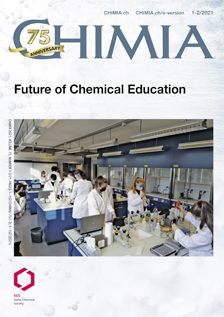A Briggs-Rauscher Reaction-based Spectrometric Assay to Determine Antioxidant Content in Complex Matrices in Low Technology Environments
DOI:
https://doi.org/10.2533/chimia.2021.74PMID:
33637152Keywords:
Antioxidant, Ascorbic acid, Briggs-rauscher, Spectrometric assayAbstract
The Briggs-Rauscher (BR) reaction is free radical based where the kinetics of formation of different iodide species leads to potentiometric and color oscillations. These oscillations were monitored in this study using a UV/Vis attenuated total reflection probe to develop an assay to measure the antioxidant content in complex matrices. The periodicity of the BR reaction was found to be very consistent (range 24–25 seconds, n = 16). Adding various amounts of ascorbic acid, a well-known antioxidant, led to an inhibition of the reaction with a linear calibration curve of antioxidant periodicity time (APT, r 2 > 0.99). The validity of this test in complex matrices was studied by determining the APT of nine fruits, and the resulting antioxidant capacity in ascorbic acid equivalency was calculated. The results generated by this assay were found be accurate through comparison with the well-established FRAP assay. These results show that visual or spectrometric monitoring of BR reaction can be used as a reliable, quick, and inexpensive alternative to more established assays with the added advantage that values generated from this assay is at pH 2 which is similar to that in the human stomach.Downloads
Published
2021-02-28
Issue
Section
Scientific Articles
License
Copyright (c) 2021 Ankit Singhal, Philipp Grögli, Bernd Geiser, Alina Handl

This work is licensed under a Creative Commons Attribution 4.0 International License.
How to Cite
[1]
A. Singhal, P. Grögli, B. Geiser, A. Handl, Chimia 2021, 75, 74, DOI: 10.2533/chimia.2021.74.







